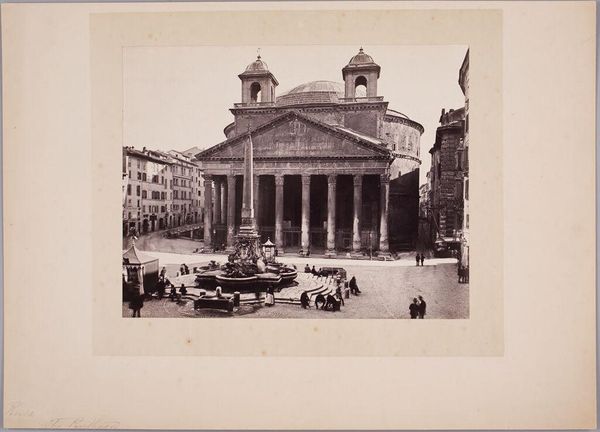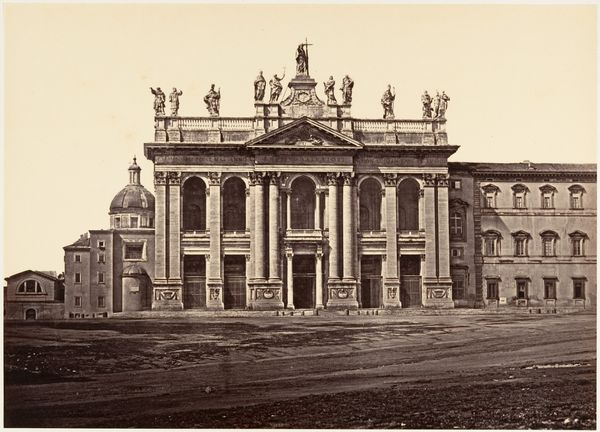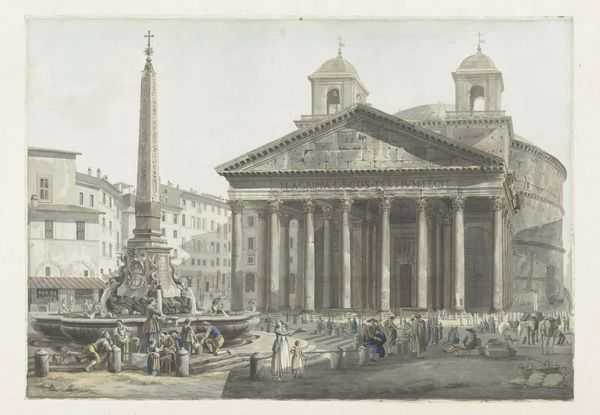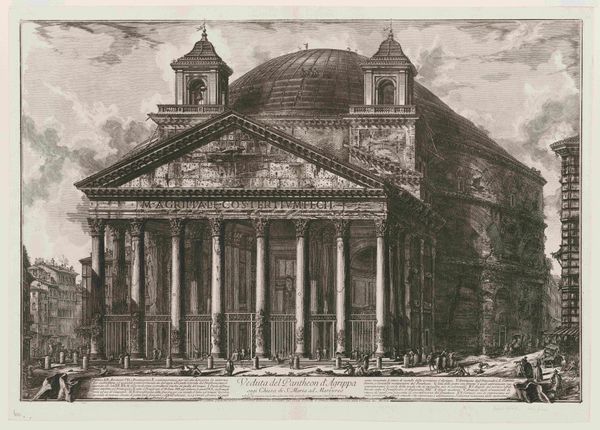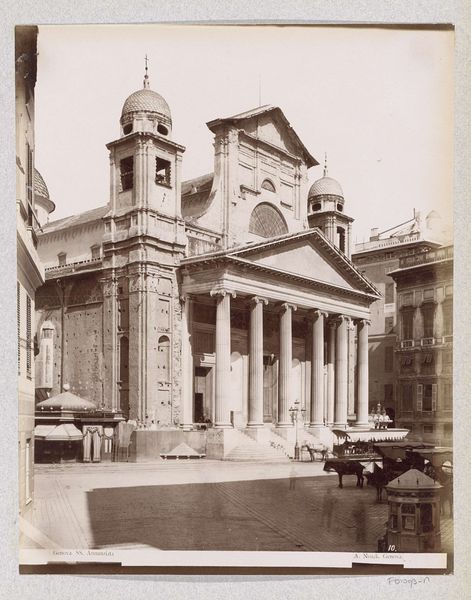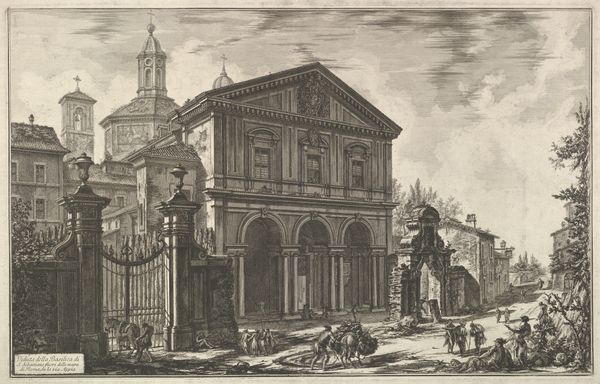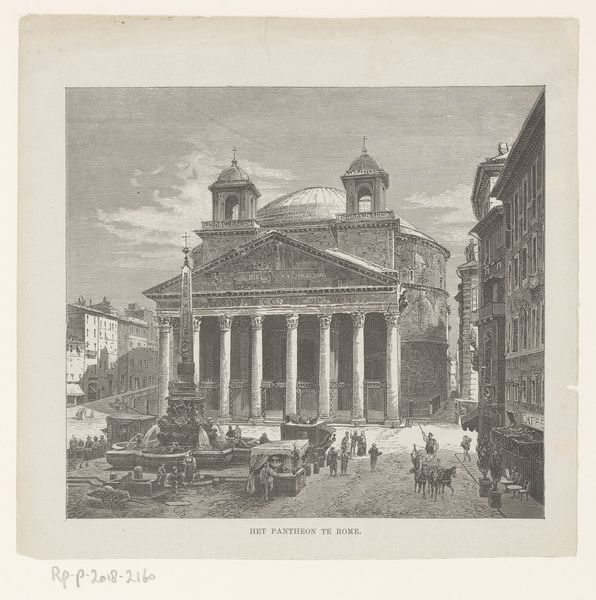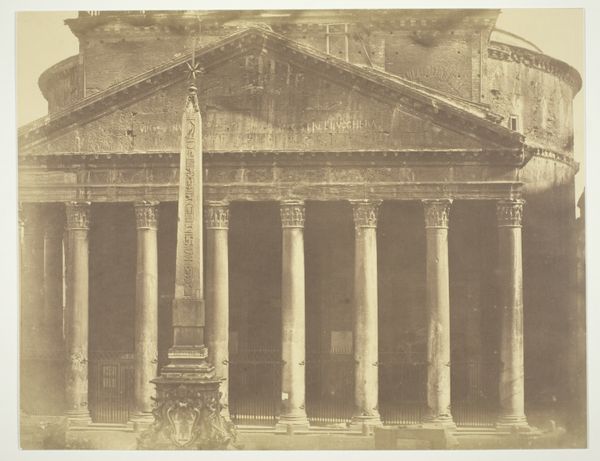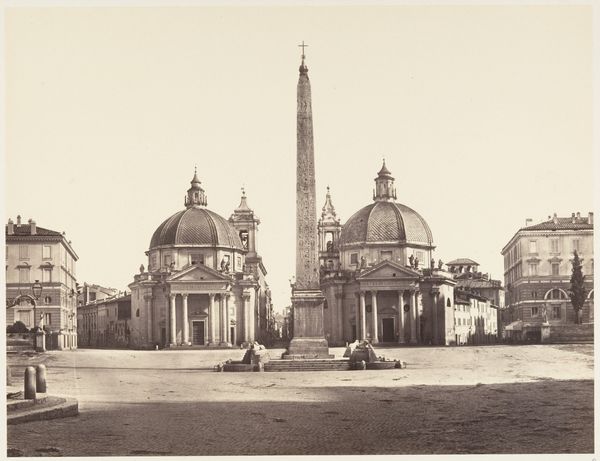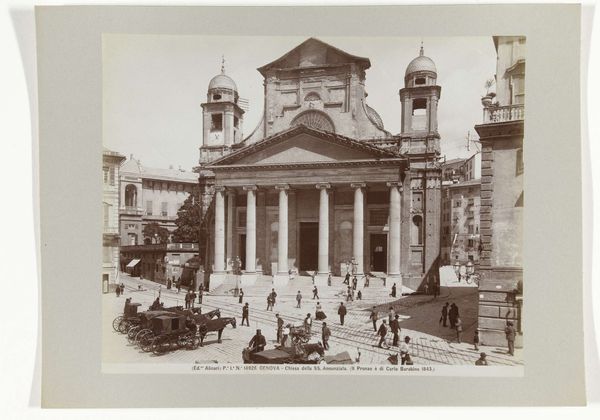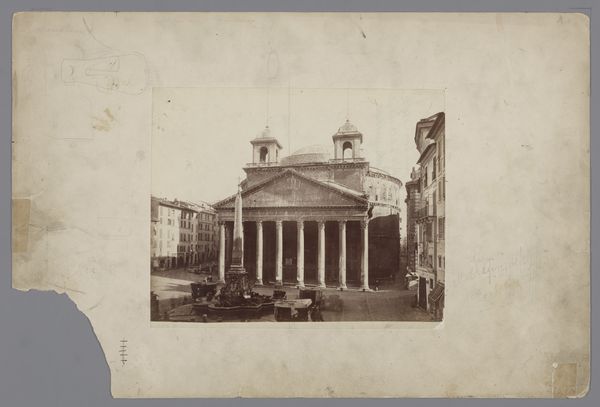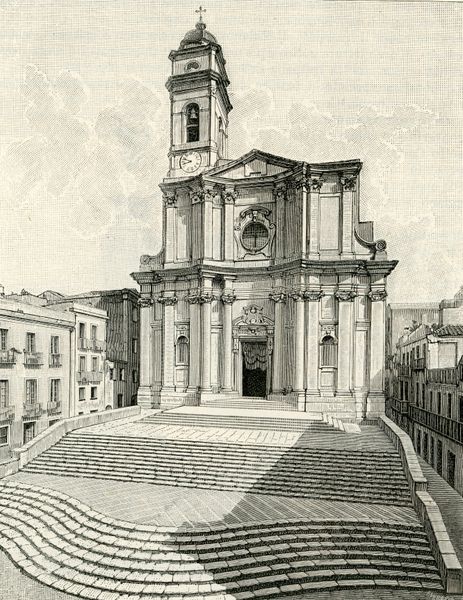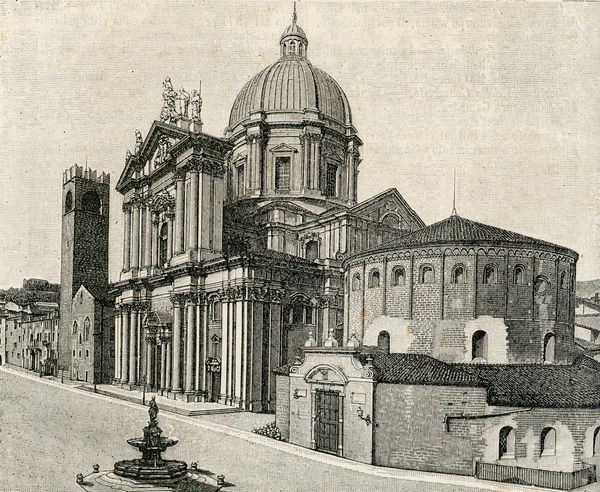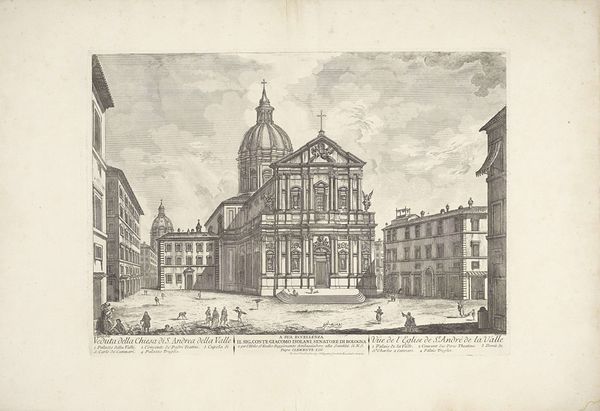
daguerreotype, photography, architecture
#
neoclacissism
#
landscape
#
daguerreotype
#
cultural heritage
#
photography
#
historical photography
#
19th century
#
cityscape
#
architecture
Dimensions: Image: 8 11/16 × 11 5/16 in. (22 × 28.7 cm) Sheet: 12 1/8 × 18 1/2 in. (30.8 × 47 cm)
Copyright: Public Domain
Curator: Wow, just look at the Pantheon! This image, a daguerreotype by Eugène Constant, probably taken between 1848 and 1852, perfectly captures its grandeur in the heart of Rome. Editor: It really does! Even in this small format, I'm struck by how imposing it is. There's a certain solemnity to it, almost as if it's holding centuries of secrets within its walls. Curator: Absolutely. What Constant has done here is freeze a moment of cultural veneration. Photography, particularly in its early stages, allowed for a new level of public engagement with monuments like this. It's no longer just for the elites who could travel or afford painted reproductions. Editor: So it becomes accessible. It also becomes almost...deified. This particular shot reminds us that art isn't made in a vacuum. The setting matters just as much as the piece of artwork in itself. It has all of those neoclassicist features. So much thought put in how light and texture would interplay... I wonder how staged it really was. Curator: Precisely. And that fountain with the obelisk? Talk about framing! It wasn't just about documenting the building; it was about establishing it as the heart of a living city. Editor: Makes me think about how much our perspective has shifted over time. We idealize "naturalism" in the modern-day art world, yet it never was so "natural" or unbiased. There's intention everywhere we see. What about the people in the frame? It looks very posed... or is it because early daguerreotypes required longer exposure times? Curator: Good eye! Given the limitations of daguerreotype technology, it's more likely they are still figures rather than carefully posed. Either way, the everyday figures provide a striking human counterpoint to the Pantheon’s timelessness. This juxtaposition really underlines its importance as a shared cultural and civic space. Editor: A space shaped and interpreted by the very act of photographing it. Thanks for letting me appreciate that; my perspective feels a little fuller. Curator: The pleasure's all mine!
Comments
No comments
Be the first to comment and join the conversation on the ultimate creative platform.
